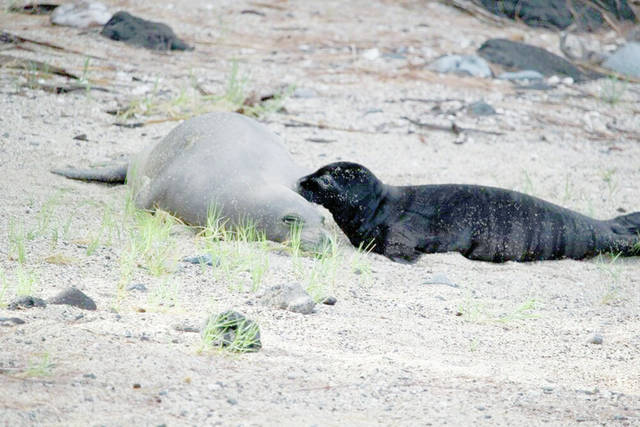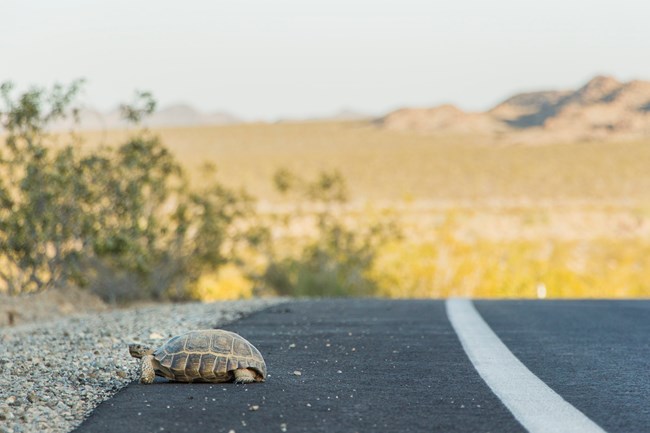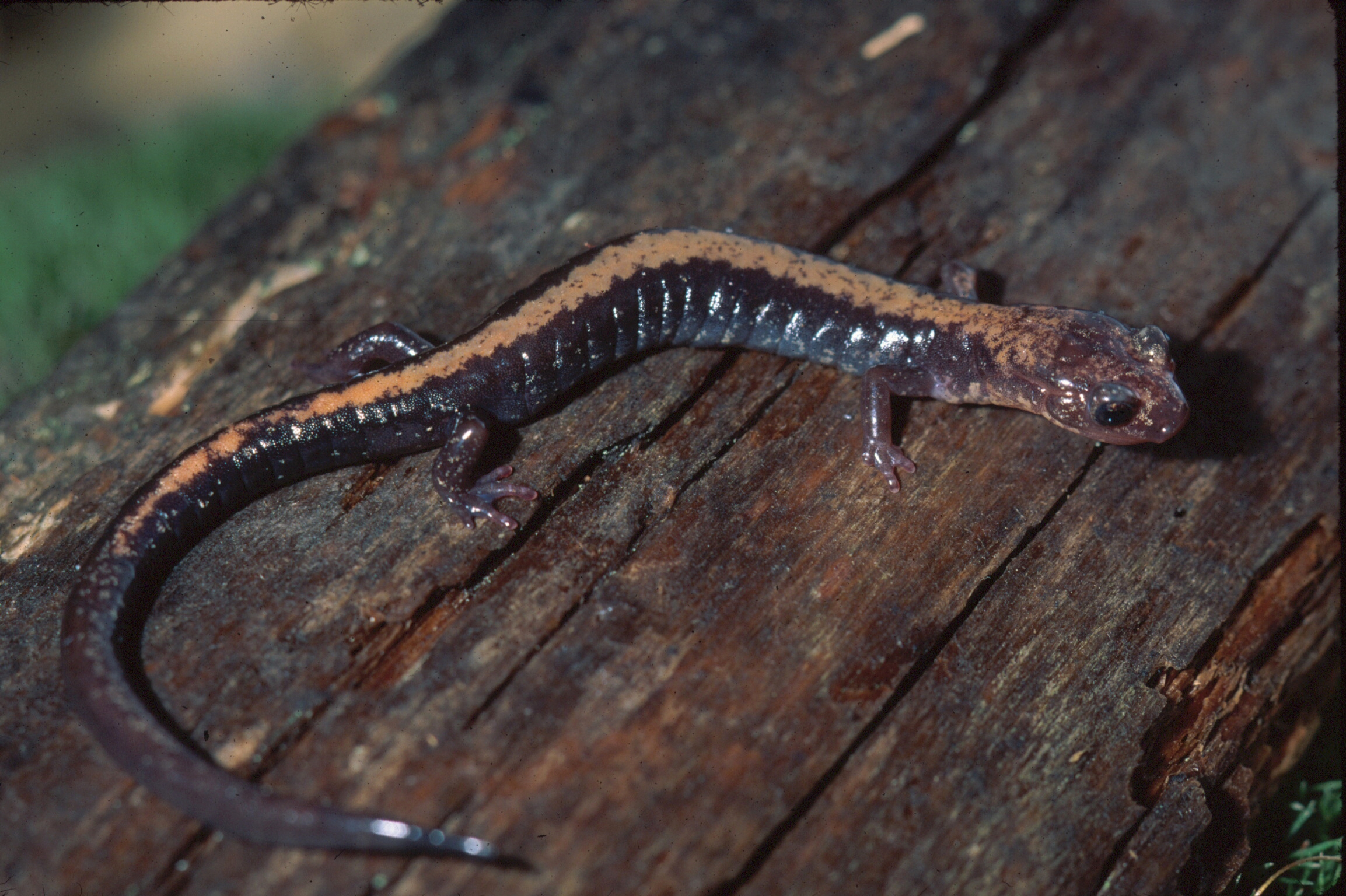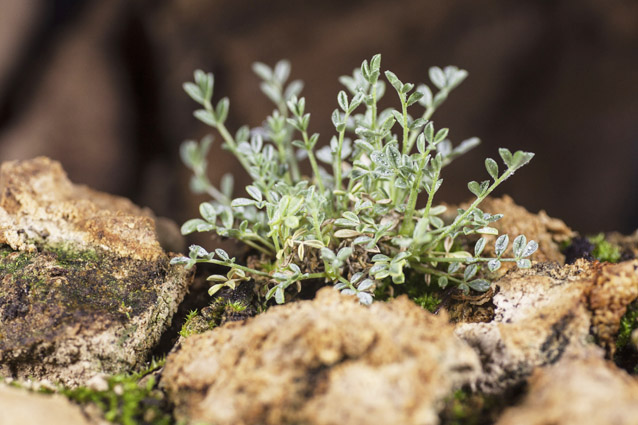What Solutions Exist For Conserving Animals In A National Park
National parks are home to some amazing plants and animals, just unfortunately many of these are "at-risk" species. This means that their population numbers take dropped so low that scientists are concerned – some accept fifty-fifty been listed under the Endangered Species Act as "threatened" or "endangered".
Endangered species are at take a chance for extinction without your help.

NPS photo
Share the space
Endangered species use park lands and waters to find food, raise their young, and rest. Some endangered species are migratory and travel in and out of different parks and some are only found inside a unmarried national park. Do you lot know Hawaiian monk seals, like the i pictured, are only institute in the state of Hawaii? Kalaupapa National Historical Park partners with the National Oceanographic and Atmospheric Administration (NOAA) to monitor monk seals that come up to the park to take their pups. Monk seals need plenty of room - about 150 anxiety to remainder - and mama monk seals can be very protective!
Parks manage habitat to protect species, particularly endangered and threatened species. National seashores similar Indicate Reyes National Seashore set up aside beach habitat for endangered nesting shorebirds and limit the activities that tin occur there to help protect the birds while they are raising their offspring. For example, they limit when dogs can be on the beach and require a leash during the times of year that dogs are allowed. Earlier this month, an off-leash dog entered the seasonal restricted area. The domestic dog attacked and killed a threatened Guadalupe fur seal pup that had come aground to balance. Cape Cod National Seashore is closed seasonally to beach driving to protect endangered plover nests and has recently seen habitat destruction from unauthorized employ. Endangered species rely on parks for safe spaces - for them to eat, sleep, play, and exist wild. It is up to usa to share the space responsibly.
Park rules are there to go on visitors and resource safe. One selfie may non seem as though it is having an impact, only retrieve that national parks encounter more than 330 million visitors annually. Getting too close to wildlife tin can disturb their natural behaviors and cause unnecessary stress. Always watch from a altitude for your safety and theirs!

NPS photo
Don't Torment the Tortoise
Did yous know in that location are 16 endangered species of turtle or tortoise found in National Park Service sites? 1 species, the desert tortoise, has likely existed for 15-20 one thousand thousand years! Desert tortoises have survived in extreme environments - the Sonoran and Mojave Deserts - only are in trouble due to interaction with humans. Impacts include:
- Disease, which tin can exist spread through humans touching the tortoises,
- Habitat loss from evolution,
- Stolen as pets,
- Killed by vehicles when crossing roadways
Terminal twelvemonth 3 desert tortoises were killed in a Joshua Tree National Park campground after beingness hit by cars. Scientists studying the tortoises take found that litter and inappropriate food disposal in the campgrounds attracts and boosts the raven population, who like to eat baby tortoises! On top of these threats, climate change is making their environment hotter and drier.
So what should you practice? Proceed your altitude from tortoises and other wildlife. When driving, go ho-hum and be enlightened. Joshua Tree National Park has a great video well-nigh why you shouldn't move desert tortoises.
The Key Deer isn't Your Lunch Appointment
Did y'all know that federal agencies piece of work together to protect wildlife? The Cardinal deer are owned, meaning they are found but in the Florida keys, and are endangered. National Park staff from south Florida parks help the Key Deer National Wild fauna Refuge with habitat management projects and by sharing the message that feeding wildlife is dangerous. Key deer who have been fed often approach roadways and are more probable to exist hit past cars. Please help us keep them healthy and wild past not feeding them.
It's illegal to feed all wildlife in a national park or wildlife refuge, as doing and so tin can exist unsafe for you and the wild animal. You lot might want to see the animate being upwardly-shut or think that feeding just one animate being, one fourth dimension doesn't do any damage. Feeding wildlife can be deadly. For more than data, check out seven ways to safely watch wild fauna.
Aggression towards humans - in the class of a bite or a scratch - could put you at adventure for bubonic plague, hantavirus, or rabies. A bite or assail from a food-conditioned blackness comport could be downright mortiferous. Wildlife fed past humans can get nuisance animals, breaking into tents, cars, and even homes - causing damage long later on you have gone habitation.
And so what should you do when yous come across wildlife or take your picnic to a national park?
- Keep your distance. If a wildlife beast approaches yous, dorsum up and give it space. Keep your food and belongs with you if you need to back abroad. Report any aggressive wild fauna to the nearest park ranger.
- Keep your food secured. Some parks have behave boxes to secure food - if they don't brand sure you keep your nutrient and other items secure. This might mean renting a deport-safe container or hanging a bear bag if y'all'll exist out overnight. Always bank check around your picnic area or campsite to make certain no litter has fallen or crumbs are left behind. Dispose of any trash properly, making sure the trash can lids are secure, or pack information technology out.
- Bank check the park's website before you go. Many parks - like Sleeping Bear Dunes National Seashore and Rocky Mount National Park mail service groovy communication for enjoying wild animals viewing safely in the park.
- Be a role model! Choice up trash or crumbs others have left behind. Maintain a safe distance and teach your children to do the same.

NPS photo
Don't Shoplift from Salamanders
National parks see more than 330 meg visitors annually! If each person took home a "memento" - a rock, stick, pinecone, or flower - there would be none left to enjoy and none for the wildlife. Rocks, sticks, logs, and leaves are important habitat for many species. The Shenandoah salamander is merely found in Shenandoah National Park. They actually breathe through their skin, but to do so they demand moist conditions, similar those found in forested areas. They consume small invertebrates they find under rocks, sticks, logs, and leaves. Removing these items reduces the available habitat for insects and salamanders. It may even brand the woods floor drier and increment erosion. Equally the park climate warms, forest cover and leaf litter becomes even more than of import for the salamander.
What should you do? Plan ahead and make sure everyone in your group knows to go out what y'all find backside. Plan a photographic camera scavenger hunt and take photographs of the interesting things you detect. Bring along a guidebook to aid decide what type of rock, foliage, blossom, or plume you take found. Attempt your hand at sketching your findings in a field notebook. Practise Leave No Trace principles.

NPS photograph
Take the Path to Save the Plants
Your adventurous spirit may threaten to take y'all off trail, but staying on the trail and out of fenced off areas is the best way to ensure you practice not destroy endangered establish species. Plants such as sentry milk-vetch in Chiliad Canyon National Park is not simply endangered, just also owned, pregnant that the park is the only place in the world information technology is found. Much of this institute'southward biological science is still unknown and a mystery to science. Rangers close off areas to protect these sensitive plants and give them time to recover. Park biologists are actively cultivating lookout milk-vetch plants in a greenhouse for transplant dorsum into areas that have been damaged by people walking off-trail.
Some parks in the Southwest feel super-bloom events when rains activate carpets of wildflowers. The sight can be scenic and many visitors travel to places like the Santa Monica Mountains National Recreation Expanse and Death Valley National Park to see the splendor. Please remember the perfect Instagram shot is Non worth stepping on a few flowers, considering when thousands of visitors trample or option the flowers the seed bank is destroyed and it volition take years for the flowers in that area to recover.
This Endangered Species Day, we claiming you to learn a new fact nearly an endangered plant or brute. A recent report by the United nations warned that nature is declining at an unprecedented rate and 1-viii million institute and animal species are at risk of extinction. While that might seem like an impossible obstacle - many of these species are at hazard because of humans, which means we tin make changes to see them recover. Reducing plastic pollution, toxic runoff from urban lawns, unsustainable fishing practices, or energy consumption tin go a long way. What does that mean at abode or in a park?
- Look for ways to reduce or reuse items at home. Replace light bulbs with more free energy efficient ones and plow lights off when leaving a room. Put on a sweater instead of turning up the oestrus. Buy less and learn to repair items when they become broken or worn out. Buy secondhand.
- Create more than wild animals habitat at home by planting native plants and pollinator friendly plants. Avoid using pesticides. Time your lawn work so y'all don't disturb nesting birds or mammals raising their immature. Turn lights off in the evening to reduce lite pollution. Plant a garden or support a local farmer and so your food doesn't demand to travel as far (saving fuel).
- Be an example in a park - stay on the marked trails, follow the rules, and selection up trash (even if it isn't yours). If you alive near a park, meet if you can volunteer to help with a restoration project. Written report your sightings in iNaturalist or a citizen science app of your pick. Take only photographs of your found treasures.
Actions can make a difference. Many species that are thriving today thanks to recovery and protection efforts including the lesser long-nosed bat, the island fox, Deseret milk-vetch, and the Maguire daisy. If you haven't heard of any of those, then that'south your first challenge!
Source: https://www.nps.gov/articles/help_endangered_species.htm
Posted by: loafters.blogspot.com

0 Response to "What Solutions Exist For Conserving Animals In A National Park"
Post a Comment